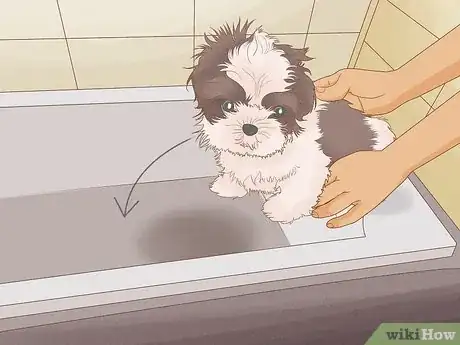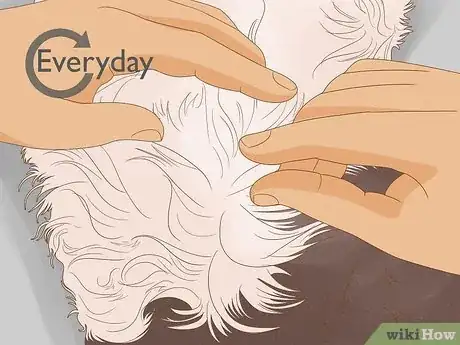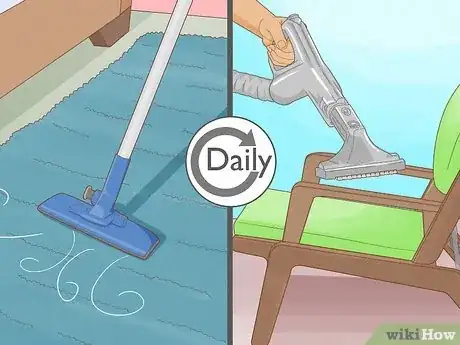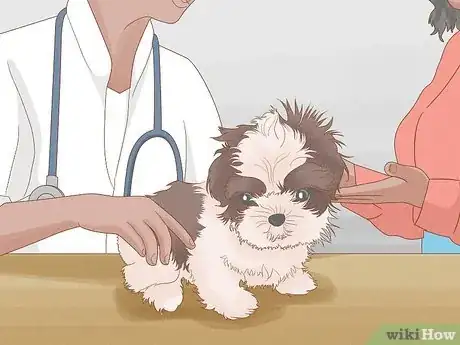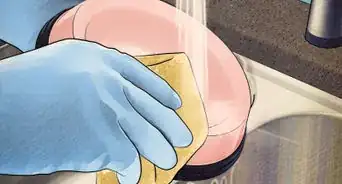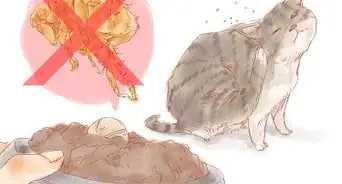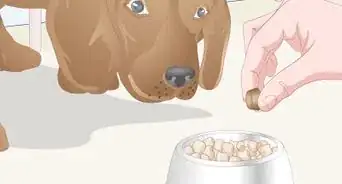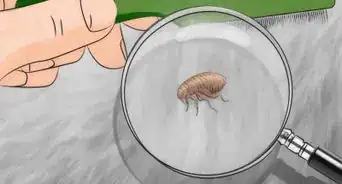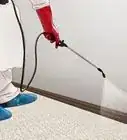This article was written by Ray Spragley, DVM and by wikiHow staff writer, Hunter Rising. Dr. Ray Spragley is a Doctor of Veterinary Medicine and the Owner/Founder of Zen Dog Veterinary Care PLLC in New York. With experience in multiple institutions and private practices, Dr. Spragley’s specializations and interests include non-surgical management of cranial cruciate ligament tears, Intervertebral Disk Disease(IVDD), and pain management in osteoarthritis. Dr. Spragley holds a BS in Biology from SUNY Albany and has a Doctor of Veterinary Medicine degree (DVM) from Ross University School of Veterinary Medicine. He is also a Certified Canine Rehabilitation Therapist (CCRT) through the Canine Rehab Institute as well as a Certified Veterinary Acupuncturist (CVA) through Chi University.
There are 9 references cited in this article, which can be found at the bottom of the page.
This article has been viewed 5,411 times.
If your dog or cat has fleas, a flea comb is a great way to immediately make your furry friend feel better. Fleas get caught in the teeth of the comb, so they’re perfect for getting rid of those itchy pests. If you're wondering how to properly use a flea comb, look no further. Keep reading our helpful guide for everything you need to know about using a flea comb.
This article is based on an interview with our board certified veterinarian, Ray Spragley, founder of Zen Dog Veterinary Care. Check out the full interview here.
Things You Should Know
- Comb your pet's entire coat when they're dry. Comb them over a light surface if you want to see the fleas as they fall off of your pet.
- Dunk the comb in soapy water every few strokes to kill any fleas on it.
- Use a flea comb daily. Do two full passes through your pet's coat for best results.
Steps
Warnings
References
- ↑ https://barnegatanimalclinic.com/wp-content/uploads/2015/08/How-to-handle-fleas.pdf
- ↑ https://youtu.be/0jCyj-EVdF8?t=198
- ↑ https://kb.rspca.org.au/knowledge-base/how-often-do-i-need-to-groom-my-cat/
- ↑ https://www.beyondpesticides.org/assets/media/documents/alternatives/factsheets/FLEA%20CONTROL.pdf
- ↑ https://extension.okstate.edu/fact-sheets/flea-control.html
- ↑ https://www.beyondpesticides.org/assets/media/documents/alternatives/factsheets/FLEA%20CONTROL.pdf
- ↑ https://cchp.ucsf.edu/sites/g/files/tkssra181/f/Fleas_FCCH_IPM.pdf
- ↑ https://www.aspca.org/pet-care/general-pet-care/fleas-and-ticks
- ↑ https://cchp.ucsf.edu/sites/g/files/tkssra181/f/Fleas_FCCH_IPM.pdf
- ↑ https://www.avma.org/resources/pet-owners/petcare/safe-use-flea-and-tick-preventive-products
- ↑ https://www.aspca.org/pet-care/general-pet-care/fleas-and-ticks
- ↑ https://www.avma.org/resources/pet-owners/petcare/safe-use-flea-and-tick-preventive-products
- ↑ https://www.avma.org/resources/pet-owners/petcare/safe-use-flea-and-tick-preventive-products
- ↑ https://www.vet.cornell.edu/departments-centers-and-institutes/cornell-feline-health-center/health-information/feline-health-topics/fleas-source-torment-your-cat
